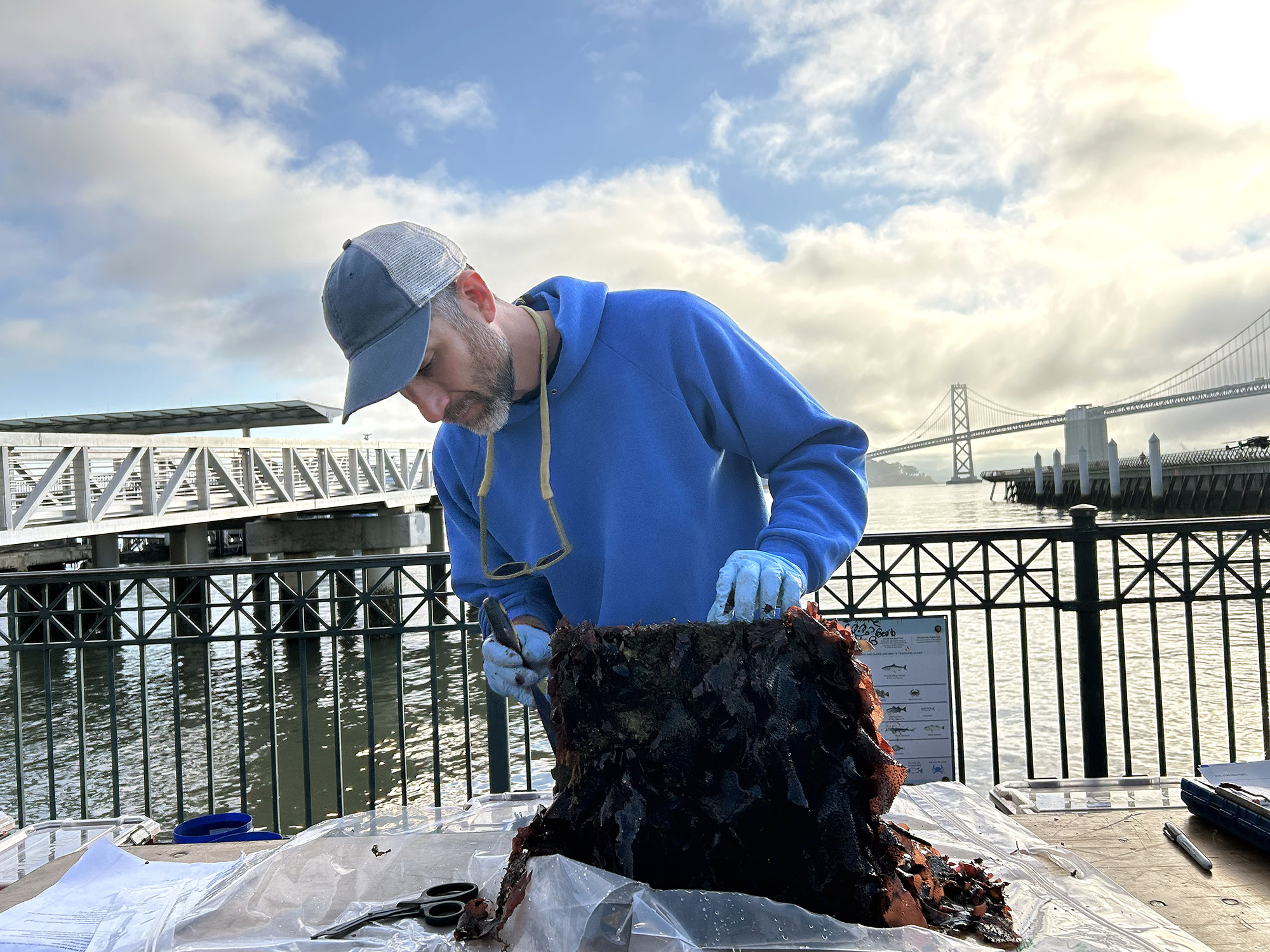
"Biological sciences technician Jeffrey Blumenthal inspects specially designed tiles, which are part of an innovative study led by the Port of San Francisco and Smithsonian Environmental Research Center, to learn how we can make San Francisco's seawalls more ecologically friendly in the future."
"So far, they've discovered more than 100 creatures at each of the three test locations. "We're going to need a new seawall eventually," said Kelley Capone, the flood study project manager."
"We've seen an evolution of the community,' said Andrew Chang, a marine biologist with the Smithsonian. 'There do appear to be a few more species that are on the more complex tiles, especially native Olympia oysters, which are a species of conservation concern in this area.'"
A study led by the Port of San Francisco and Smithsonian Environmental Research Center examines how to create more environmentally friendly seawalls. Biological technicians have found over 100 marine species living on experimental cement tiles at three test locations. Notable species include hermit crabs, native limpets, and Olympia oysters, which are of conservation concern. The study aims to analyze how different tile textures influence species growth. A report will help incorporate findings into plans for rebuilding San Francisco's 7.5-mile seawall.
Read at Kqed
Unable to calculate read time
Collection
[
|
...
]